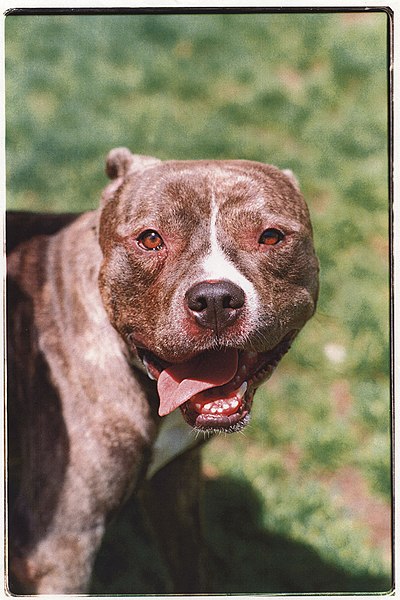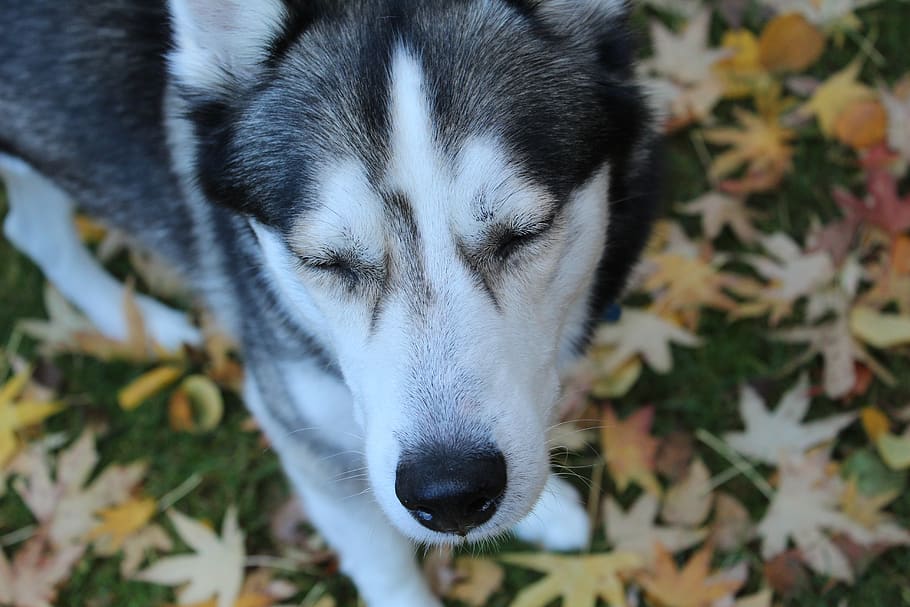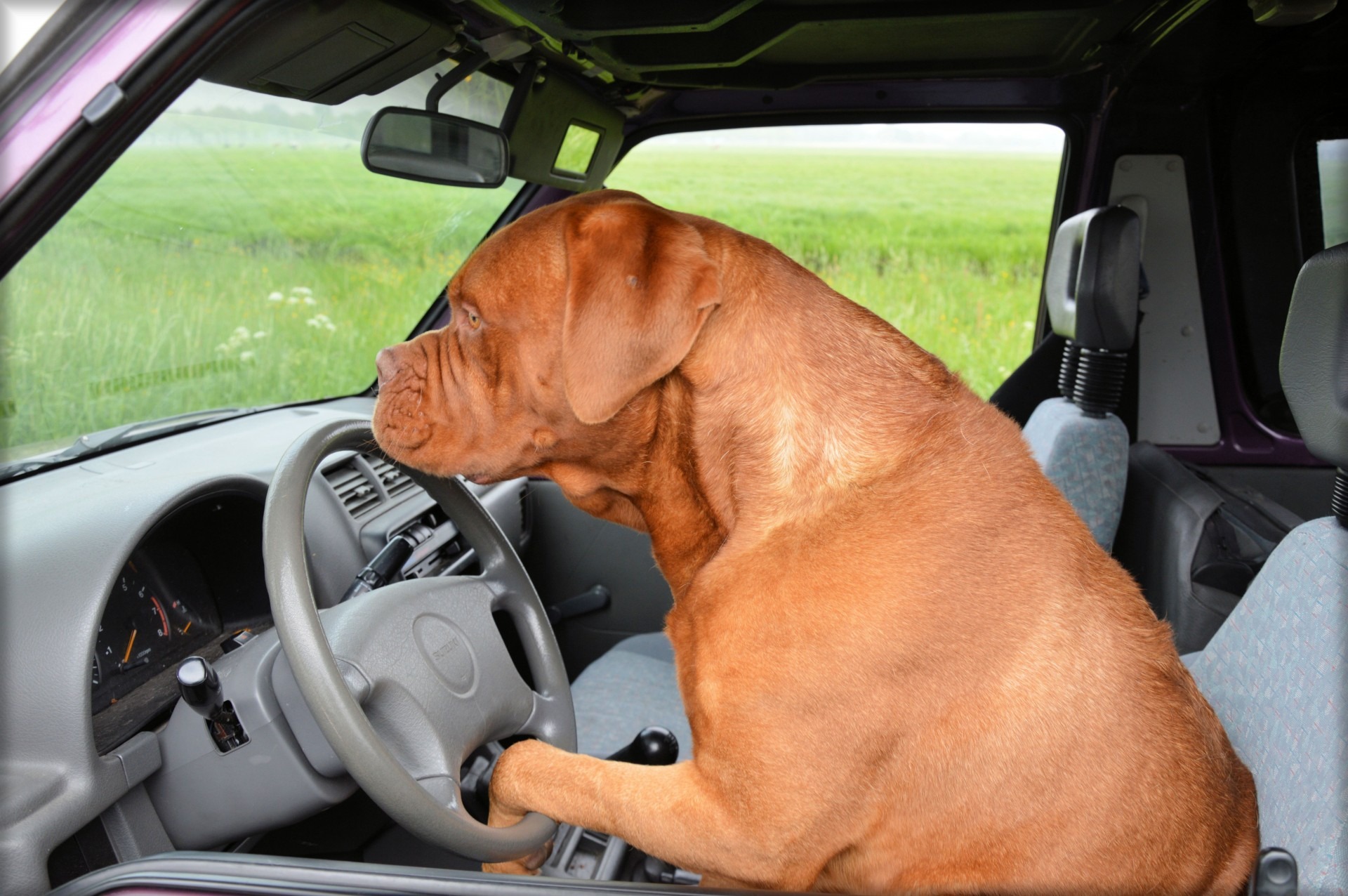At What Age Do Pitbulls Calm Down?

Are you looking for a Pit Bull that’s calm and easy to handle? Then you’re in the right place! We’ll teach you everything you need to know about Pit Bulls, including what age do Pitbulls calm down, train them, and what to do if they become aggressive. So whether you’re new to Pit Bulls or have had one for years, When do Pit Bulls start to calm down? We’ve got everything you need to know in this article.
Table of Contents
When do Pit Bulls start to calm down?
Best Answer: Pit Bulls are most active between three and twelve months. After the first year, you will notice that your Pit Bull has calmed down a little. Pit Bulls usually are pretty active and do not begin to quiet down until they reach the age of two.
Every dog is unique. Some Pit Bulls develop and quiet down faster than others, while others never calm down. You’ll need specific strategies to efficiently manage your Pit Bull’s activity and promote calm conduct.
Why Are Pit Bulls So Hyper?
Pit bulls are incredibly loyal and loving dogs. They love people unconditionally and will protect their families with everything they have.
The causes of a hyper Pitbull will be discussed below.
1. Immaturity
Pitbulls are known for their high energy levels, but this is not always a sign of hyperactivity. Some Pitbulls that have been bred in the wrong way can be very energetic and act like puppies even when they’re adults. High energy levels can also be a side effect of pitbull breeders who do not correctly raise and show Pitbulls. They give them many puppies to attract people, but these puppies are very overactive as they grow up quickly. If a puppy is exceptionally energetic early on, it will stay hyper even into adulthood; unfortunately, most Pitbull breeds are bred for violence and aggression instead of being bred by knowledgeable pet owners for pets and companions.
2. Energy level
Pitbulls like explosions, so there is a biological need for them to display their energy levels as that releases natural endorphin stimulants throughout the body, which gives them a great sense of well-being, especially if they are being played with by others or displayed in public theaters (where this form of stimulation can occur because people know little to nothing about Pit bulls) Because genetic mutations are prevalent in the Pitbull breed species, few of them claim to be Pit bull-babies
The youngest pit bulls can grow into more extensive than normal dogs. They command attention and are intimidating with exceptionally high intelligence smiles that make others uncomfortable. Nervousness arises from fear of other people.
3. A lack of physical and mental stimulation
If you’ve been a Pitbull owner for any length of time, then you’ll know that it is very important to keep your dog mentally stimulated and physically active. Keeping them mindfully active can work out great because they will be very good at keeping their brains stimulated and won’t develop problems mostly caused by boredom throughout most of their lives. If not, you might be seeing the results of an unwell dog. To avoid such problems, you’ll need to take the right steps to educate your Pitbull properly (like have a regular veterinarian do checkups).
4. A lack of attention
I know this is a common one, but it’s important to note that Pitbulls need the attention of their owners. They need to be paid direct and sincere attention because they cannot talk or interact with others on anything more than superficial levels. As we have seen from the above, they are incredibly intelligent and sensitive creatures. They respond to mood swings and lack of attention in a devastating way.
Meaningful human-to-human interaction can help Pitbulls become mentally at peace – if you know how their body language works (who knows?). Then this will work as a communication system between you and your dog no matter what your dog’s mood is at the time (this could help you understand what your Pitbull wants).
When their need for attention goes unrealized, they will search for new sources. A taste or smell can stimulate them to switch from back-yards and kennels to human homes again, which leads mostly to problems that Pitbull breed owners are already aware of excessive barking during the night, which will often lead to conflicted relationships with the surrounding communities.
It will usually require that you invest a bit of money into getting your Pitbull socialized properly – but if anyone wants an obedient and loving dog that can get along well in almost any chaotic situation, then the investment is worth my opinion. I think every owner would agree about this.
5. A lack of leadership control
It’s not uncommon for dogs used as pack-hunting animals to become aggressive and reckless when they are left alone for months. Due to the changes in mood linked with these instincts, it is important that Pitbulls be fed and watered on time and exercised properly, adding further mental strain upon them (this is an important component of later stages).
It helps if you have some sort of leadership over your Pitbull, which extends beyond feeding them and taking them for a walk. Given that it’s difficult to deal with, you may also want to look at additional training tools available to help your Pitbull keep up with his housetraining routine.
6. Lack of socialization
Many responsible dog owners will agree that leaving their dogs alone from very early on is not the best way to handle them which should then lead to proper exposure and correction methods when they do indeed get out of control.
It is also impossible to mimic the way animals behave in the wild and take proper measures for this process – which means that it will then be up to you as a dog owner, who wants your Pitbull’s priority to be obedience to calm down.
7. Hyperkinesis
This is a behavior that some Pitbulls have, where they act as if they are on fire. They will pace and pant, drool excessively, and lick their lips. This is a very common problem in pit bulls who have been bred for short attentiveness against other breeds.
Suppose an owner has Pitbulls that are known as persistent barkers. In that case, the chances are that some of these dogs will also be prone to excessive panting and pacing (this is obvious because most types of barking do create the same effect on certain individuals). This specific behavior varies from dog to dog, and it’s up to their handlers to help them out if they tend to hyperkinesis.
Most people with Pitbulls with this particular behavior notice that the problem is stubborn and will not go away easily. They should look into additional training tools designed to help correct such issues in their dogs as well:
This can also be considered a serious issue for some types of Pitbull if they are constantly panting, suddenly become hyperactive or start showing aggressive tendencies towards other animals or objects nearby.
How do I teach my pitbull to calm down?
So how do you calm down hyper Pit Bull?

There are many different ways to calm down a hyper Pit Bull. The most common way is to make sure your puppy has plenty of exercise and stimulation. It is also important to provide mental stimulation as well.
Let us dig deep!
1. Exercise
Pit Bulls need to expend their energy. If your Pit Bull is not being exercised, it can become hyperactive and destructive. An active and well-exercised Pit Bull will be a much calmer dog.
Exercise is also an important part of maintaining a decent, healthy weight.
2. Mental Stimulation
Pit Bulls need mental stimulation to stay happy and focused. They thrive on their owner’s energy and often become frustrated when not given enough attention. The best way to keep your Pit Bull happy is by giving them plenty of mental stimulation. Activities like puzzles, running around the house, or having them chase a ball to play gives just what they need. The Pit Bull can stay occupied for many hours at once and not have time to be destructive or hyperactive.
3. Feeding Your Dog Properly
Putting healthy food into your dog’s mouth means it will feel better every day, no matter how tired they are. If you give your Pit Bull unhealthy foods such as processed dog foods, you may be feeding your dog on such a large daily basis that it is there for the taking. However, healthy food does not mean cheap food. You can get good quality bagged or complete and balanced dry dog foods from various sources to feed your Pit Bull with absolutely no problems over time (You already know where to look).
4 Control The Environment
Pit Bulls are very comfortable in their environment. They enjoy the comforts of home and being able to get around easily. However, sometimes, a Pit Bull needs to be confined or asked to do something that is not normally done in the house. For example, suppose you need to take your Pit Bull somewhere for training or obedience classes. In that case, the dog will not mind being confined in a crate during transport but needs to be free when it is at home, so it does not get startled and become aggressive during those times. Otherwise, they physically cannot do things such as jumping into large spaces that are normally comfortable, like desks and tables, etc.
5. Reward Good Behaviors
Do not reward bad behaviors. If your dog starts to show signs of hyperactivity, anxiety, or aggression, you need to be able to identify the cause and address it immediately.
Aggressive behavior against humans must stop immediately. Hyperactive behavior can be caused by lack of exercise and supervision, boredom, and insecurity. If you have a Pit Bull that is beginning to show signs of fearfulness or aggression towards other animals, the cause may be hunger; it needs more food than usual. Fearful behavior throughout can also serve as a warning for your dog, so they do not get hurt in unknown situations when guarding territory against other animals such as cats or bigger dogs (including humans).
6. Routine
Providing a Pit Bull with a routine is essential. They are dogs that thrive on structure and predictability. Having a schedule for their daily activities can help prevent hyperactivity, destructive behaviors, or boredom.
Routine is especially important when it comes to training. While Pit Bulls are intelligent enough for obedience training, there is only so much the average owner can do when teaching commands and following a strict regimen particularly when considering such things as crate rest periods before free-kenneling or “bedtime.” And keeping your dog busy with one specific task throughout its day will help prevent stress in stressful times, and such will allow your Pitbull to calm down.
7. Mental Stimulation
Pit Bulls are very intelligent and like to learn new things. Please provide them with positive mental stimulation by teaching them tricks, agility, nose work, and even how to do tricks.
FAQs
Below are the frequently asked questions your Pitbull’s age needs to reach before he can calm down.
At what age does a pit bull stop playing and become serious?
It can be difficult to answer, as there is no definitive answer. While some pit bulls might stop playing as early as six months old, others might still be playing up until they are eight or nine years old. However, once pit bull reaches the age of two or three, their playtime may gradually decrease until they reach the age when they are considered to be “serious.” The pit bull may exhibit more aggression and dominance behavior and might become less social.
At what age does a pitbull stop growing? How do you know?
There is no definitive answer to this question, as Pitbulls can continue to grow until they are between one and two years old or until their growth plate has closed. When a pitbull’s growth plate has closed, its growth will cease, reaching its full size at this point. The best way to determine if a pitbull is reaching its full size is to look for evidence of its growth, such as muscle mass, bone density, and height. Pitbulls also reach sexual maturity at around one year old, so it is important to be aware of this when evaluating potential adopters or guardians.
How is a six-month-old Pit Bull’s behavior?
A 6-month-old pit Bull’s behavior can be quite mixed and unpredictable. On the one hand, they may be playful and affectionate, while on the other, they may be aggressive. It is important to be patient with them and not allow their behavior to interfere with their development. They are still learning how to socialize and establish relationships with people and other animals at this age. Some behavior problems that may occur at this age include biting, chewing, and housetraining issues. Be sure to provide them with plenty of exercise and training so that their behavior can become consistent and manageable.
Do Pitbulls ever calm down with age?
There are many Pitbull, and not all of them will calm down with age. Some Pitbulls may become more docile, while others may become more aggressive. Ultimately, it is important to get a pitbull appropriate for your lifestyle and personality. If you are looking for a dog that will be gentle and passive, then a younger pit bull may be the best option for you. On the other hand, if you are looking for a dog that will protect you and your family, then an older pit bull may be a better option.
If everything checks out, you are ready to bring your new friend home! As with any new pet, getting acquainted with your prospective pitbull before bringing them home is important. Meet the dog in a safe and comfortable environment and take note of any aggressive or defensive behaviors.
At what age do Pitbulls become aggressive?
Pitbulls can be quite aggressive at any age, but they typically become more aggressive as they get older. This is typically due to a combination of genetics and training. If you are thinking of getting a pit bull, it is important to be aware of their breeding history and ensure that the dog you are buying has been properly socialized. Pitbulls are known for their protective nature, so it is important to create a safe environment for them and your other pets.
Training can help mitigate some of the aggressive behavior, but it is important to keep in mind that Pitbulls are bred to be fighters and will likely respond aggressively if they feel threatened. It is also important to keep in mind that Pitbulls are not typically good with children and should be supervised.
How is a six-month-old Pit Bull’s behavior?
This can be difficult to answer, as the best way to assess a six-month-old Pit Bull’s behavior is through observation and trial and error. Try to take the time to get to know your dog and see what behaviors are typically associated with being happy and healthy. Additionally, keep in mind that puppies are notorious for testing boundaries, so it is important not to get offended when they do so. Punishment only serves to make the situation worse. Instead, remain calm, engage with your pup, and praise them when they obey you. Most importantly, be consistent with your rules and expectations. If you can instill trust in your pup early on, they will be easier to train and handle.
How do you train a Pitbull to be nice?
This can be difficult to answer, as there is no one-size-fits-all answer. However, some tips that may help include crate training, obedience training, and positive reinforcement. Crate-training can be a great way to teach your Pitbull how to behave while they are not in the immediate vicinity. This can be done by placing their crate in a specific spot in the house and leaving it there when you are not home. You should also provide them with a toy and food inside the crate. Make sure to establish a positive relationship with your Pitbull by praising them when they obey commands and giving them positive attention when they are in the crate.
Obedience training can help your Pitbull learn basic obedience commands, such as sit, stay, come, and down. This will help to minimize any potential conflicts and ensure that your Pitbull is always safe.
What do I do with a 7-week-old pit bull?
It depends on the specific situation. However, if you believe your pitbull is being aggressive or displaying other signs of aggression, it may be best to seek out professional assistance. There are a variety of resources available, such as the ASPCA or the National Dog Trainer Association. If you feel that your pit bull is just misbehaving and not posing a threat, there are a variety of techniques that can be used to get them to stop. These may include training sessions, treats, and positive reinforcement. It is important to remember that punishment should only be used as a last resort and only when all other methods have failed.
How can you train a six-week Pit Bull puppy?
There is no one-size-fits-all answer to this question, as the best way to train a Pit Bull puppy depends on the individual dog and the specific training goals that you are hoping to achieve. However, some general tips that can help include:
- We are providing plenty of positive reinforcement.
- Providing consistent, positive reinforcement for correct behavior. Establishing obedience commands early on.
It is also important to be patient with your pup and never force them to do something that they do not want to do. Be consistent in your training methods and be patient while training your Pit Bull puppy. If you put in the effort and take your time, you will be rewarded with a well-behaved pup that will be a pleasure to have around.
Should I get a pit bull, or is it too much work?
It is important to consider whether or not a pit bull is a right breed for you, as they can be very exciting and loving companions, but they can also be challenging to train. Additionally, they require a lot of mental and physical exercise, which can be a challenge if you cannot provide that. The best decision depends on various factors, including the individual’s lifestyle and preferences.
If all of this sounds like too much work, it might be a better idea to look into other breeds of dogs that may be a better fit for your lifestyle. However, if you are interested in adopting a pit bull, do your research first and talk to plenty of people who have one before making a final decision.
What should I do about my pitbull?
If you are concerned about your pitbull’s behavior and safety, there are a few things that you can do:
- Talk to your pitbull’s owner and ask them to show you the dog’s training documentation. It will help you to understand the dog’s temperament better and ensure that any disciplinary actions taken are legitimate.
- Be sure to keep your dog supervised when outside and be prepared to take action if it appears that the dog is about to engage in any dangerous behavior.
- Always keep your dog leashed when in public and be aware of your surroundings.
What are some special cares for a six-month-old Pit Bull?
When it comes to taking care of puppies, you need to keep a few key things in mind:
- They are very active and need a lot of exercise.
- They are very social and need plenty of socialization.
- They are prone to chewing and often explore their surroundings, so you will need to be prepared with plenty of chew toys and safe places for them to play.
- Six-month-old puppies are starting to develop teeth, so you must be careful with them around sharp objects.
- Six-month-old puppies are very sensitive to cold, so you need to keep them warm and protected from the cold outdoors.
Summing up
Professional help is often the best option for calming a hyperactive Pit Bull. Whether it be a professional trainer, behaviorist, or veterinary behaviorist, these professionals can teach you how to manage your dog’s environment and help you identify what triggers their behavior. They can also provide the medical help and treatment your Pit Bull may need, particularly due to a medical issue such as allergies or intestinal issues.
There are very good reasons why many of these professionals recommend having an entire team behind you when training and owning a Pit Bull; vets who specialize in pit bulls, for instance, should know that some breeds will be fearful by nature and require more care with their interaction than others.




